Index Case 8
Cough
Follow-up
Specialty Consult
Tumor Board
Legal
Review
Documentation
The patient contacted a medical malpractice attorney, and a lawsuit was filed. The patient learned of his cancer 3 years after the original urgent care visit, and the lawsuit was filed 2 years after he was diagnosed with cancer. During the lawsuit discovery process, the plaintiff came to the realization that the physician was an independent contractor with the VA, not a direct employee.
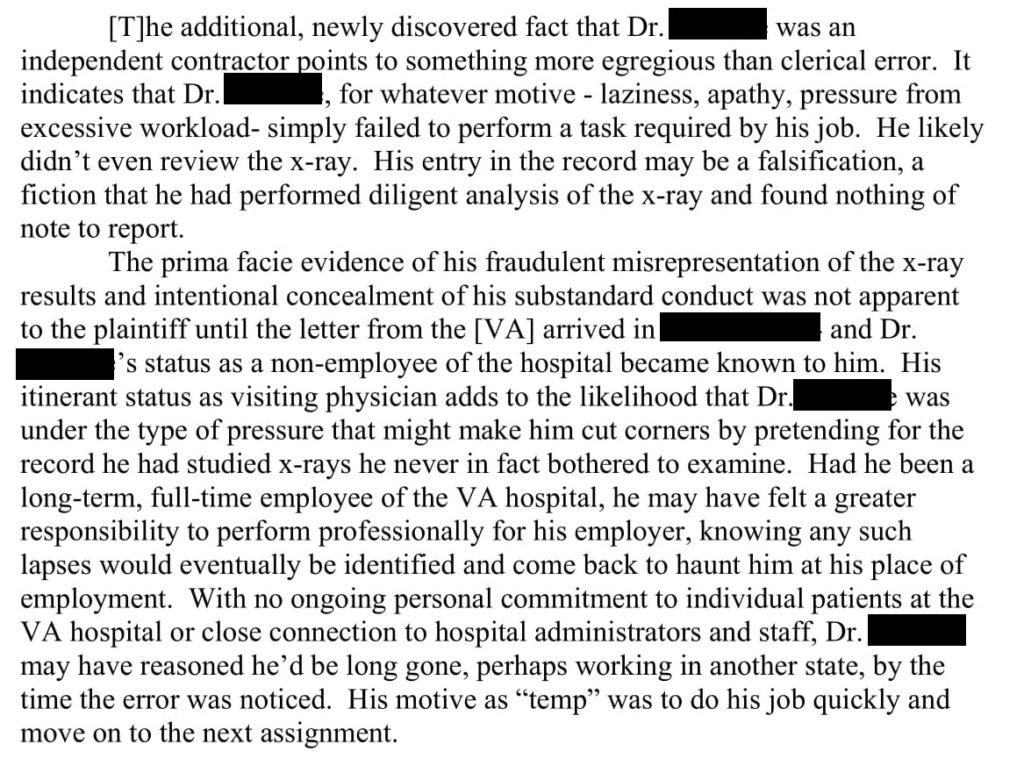
The timing of the patient’s discovery of his lung cancer plays a key role in this lawsuit. The state in which the lawsuit was filed has a statute of limitations of 3 years. This three-year time frame starts when the alleged malpractice occurred. However, if the alleged malpractice is not immediately discovered (as in this case), the plaintiff is allowed an additional year in which to file a lawsuit. In actuality, the lawsuit was filed 2 years after the discovery was made. The defense team noted that not only was it greater than one year from his primary care doctor discovering the growing mass, it was also greater than one year from his biopsy, tumor board review, and starting his chemotherapy and radiation therapy.
The plaintiff’s attorney attempted to claim that the additional year started from the time that it was discovered that the physician was an independent contractor, not a federal employee. The defense team argues against this claim in their motion for summary judgment.
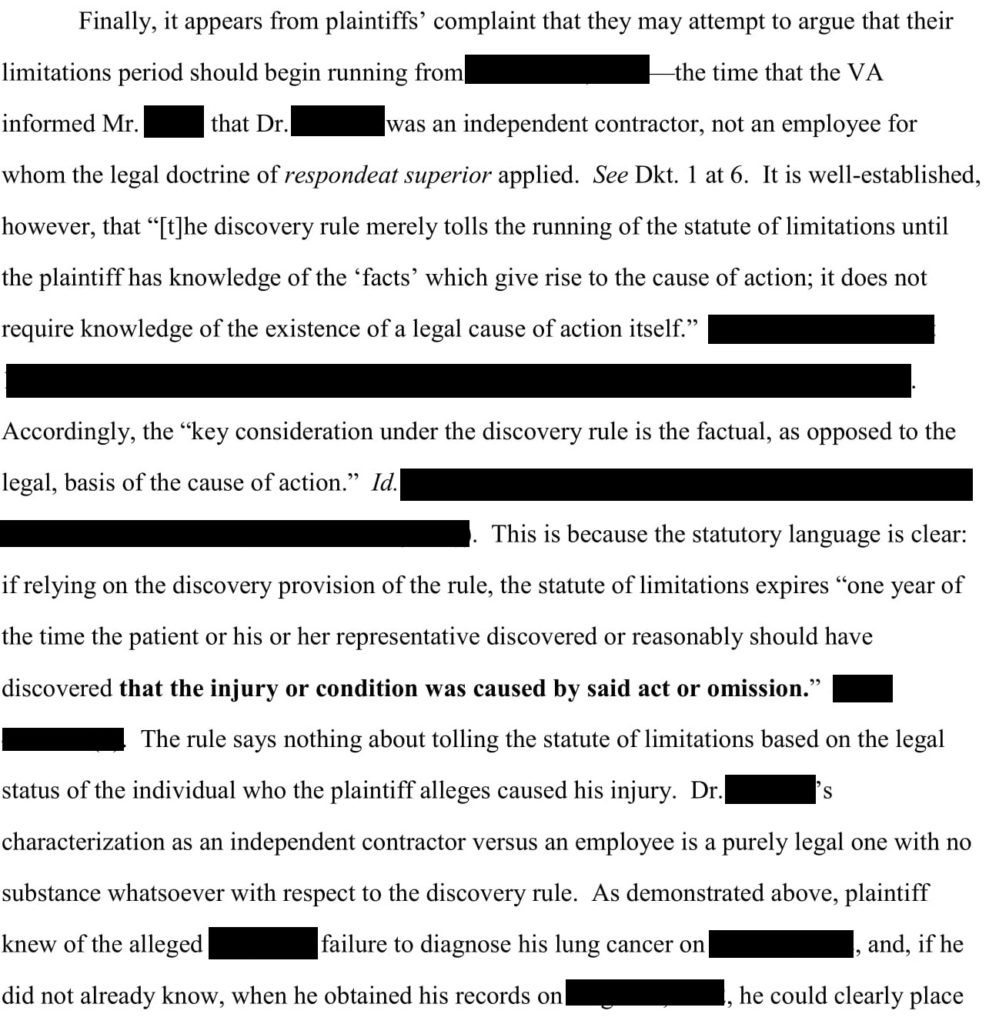

Another interesting fact about this case is that the physician had passed away before the lawsuit was filed. He died without any knowledge of the missed cancer or the impending lawsuit.
The conclusion to the defense team’s motion for summary judgment is shown here:
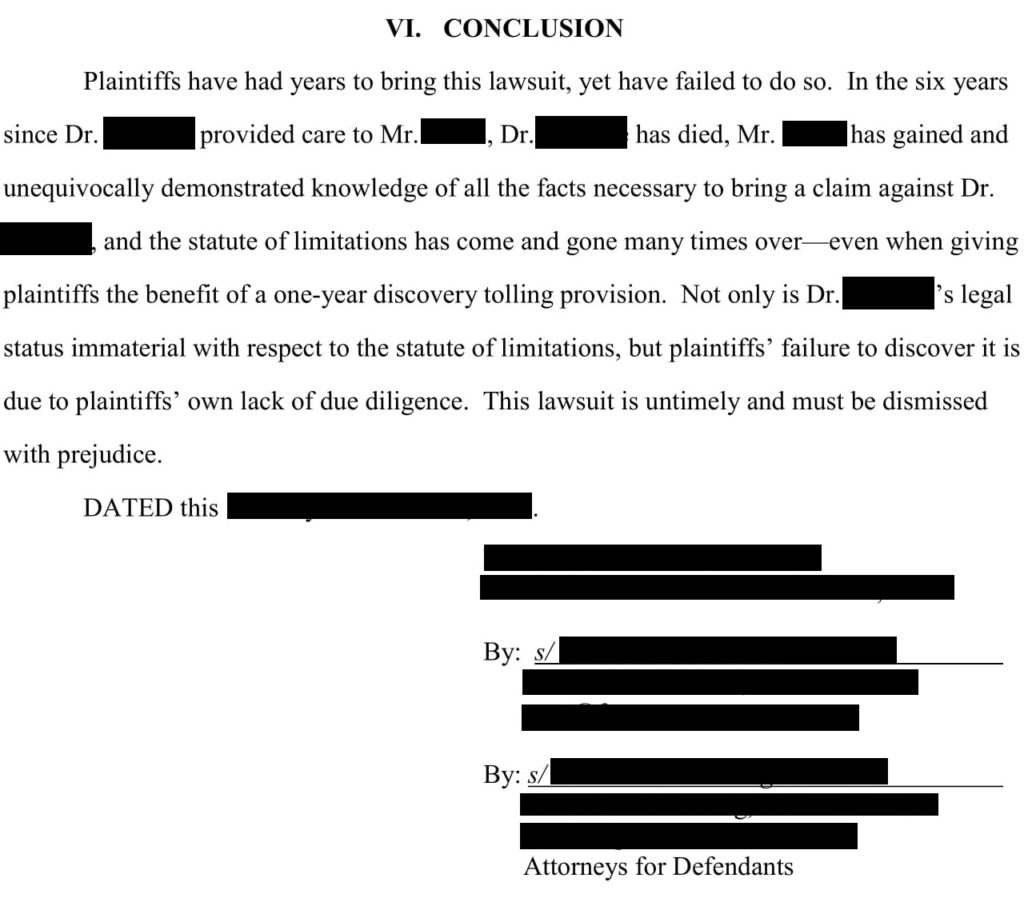
The judge agreed with the defense that the physician’s employment status had no bearing on this lawsuit, and that the statue of limitations had passed. The lawsuit was dismissed. The judge’s explanation of the court’s decision is shown below.
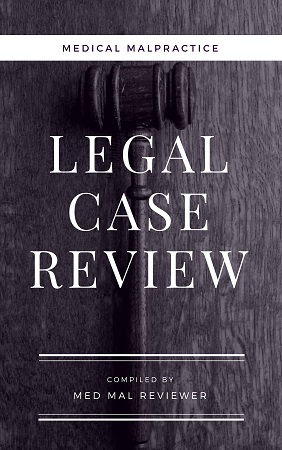
Pre-order the new eBook from medmalreviewer!
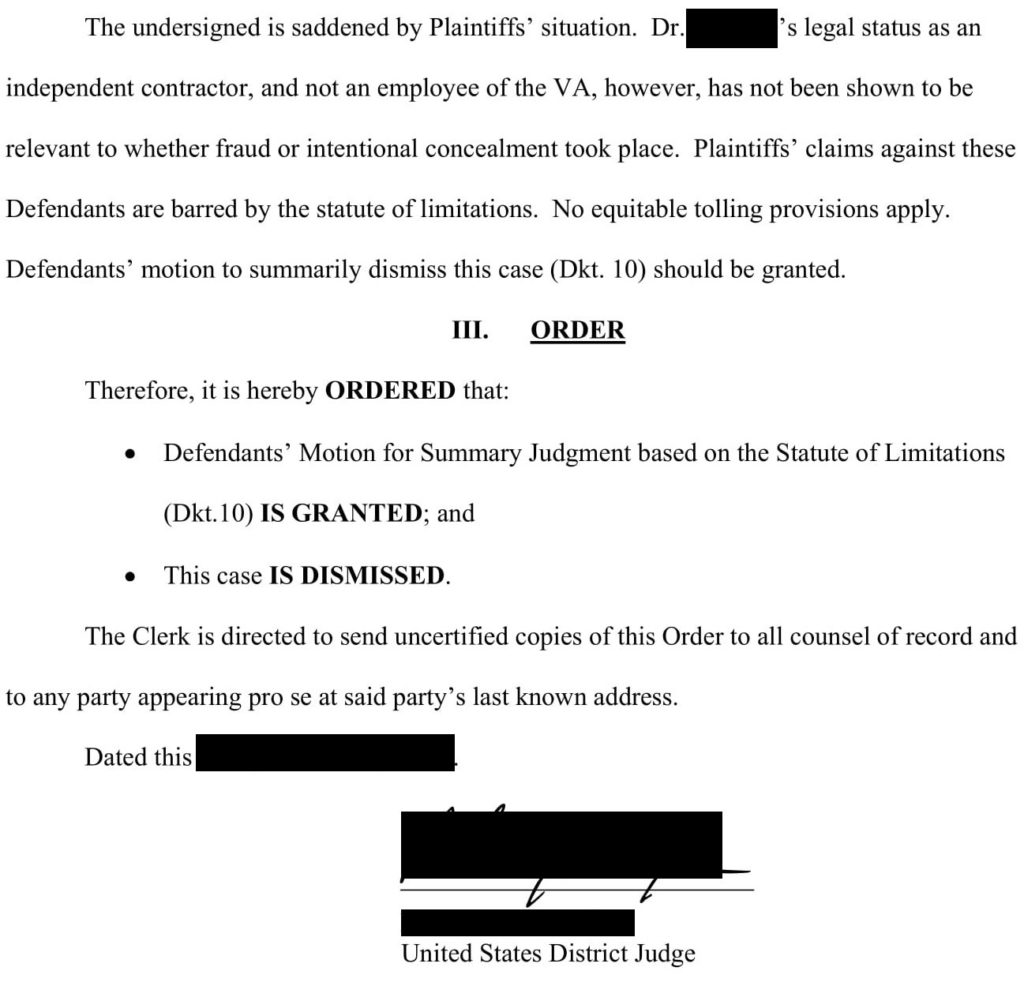
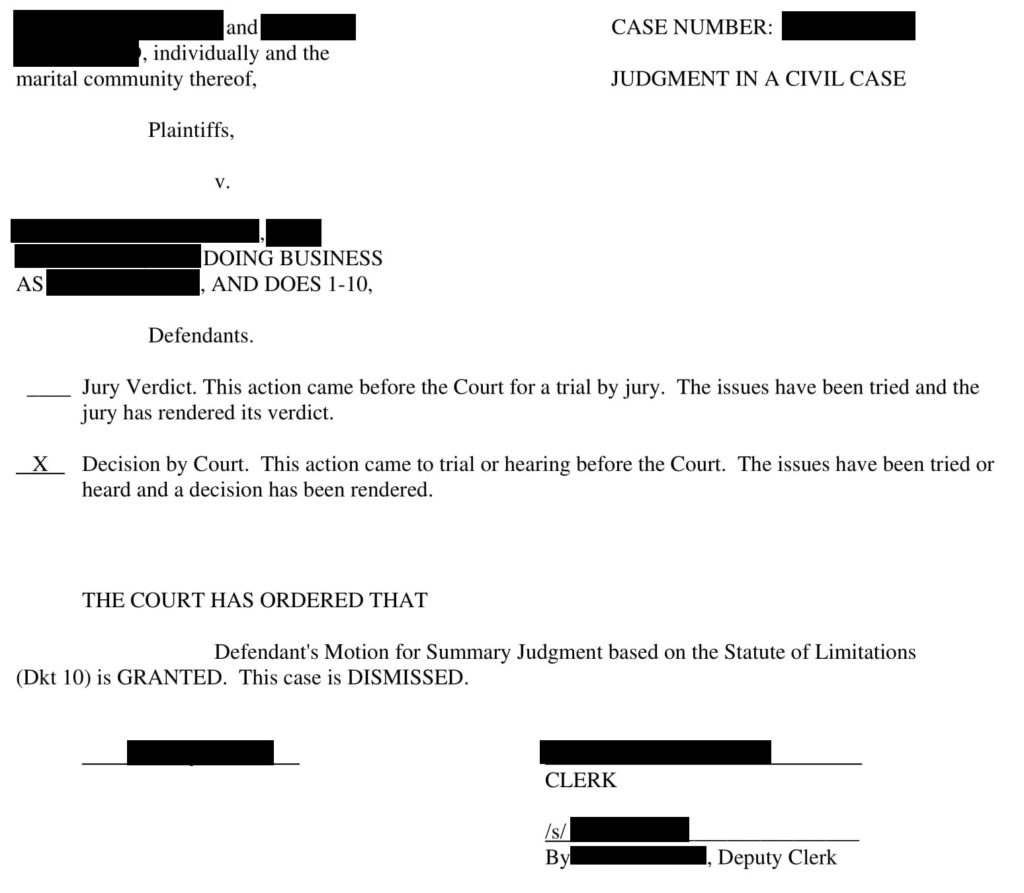
Do you feel that the physician was negligent?
Do you feel that having a statute of limitations is appropriate?